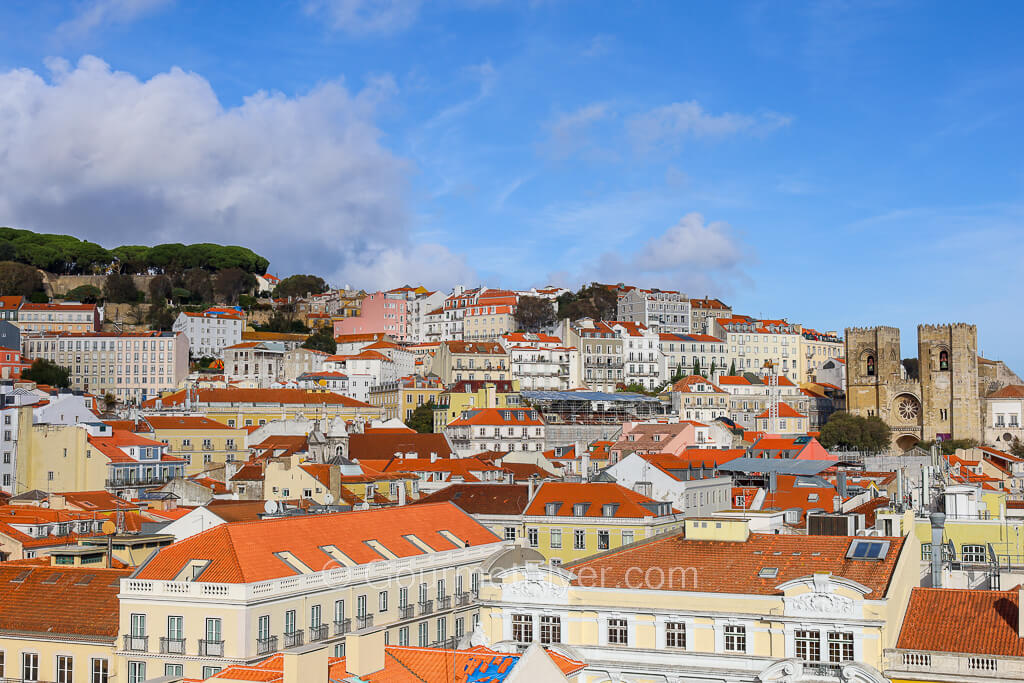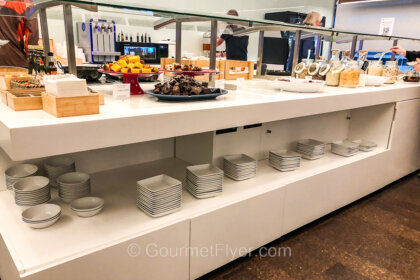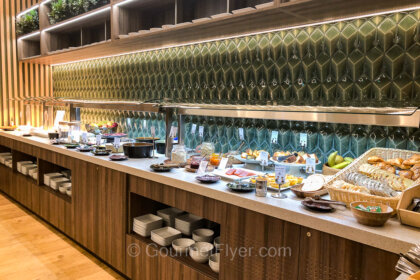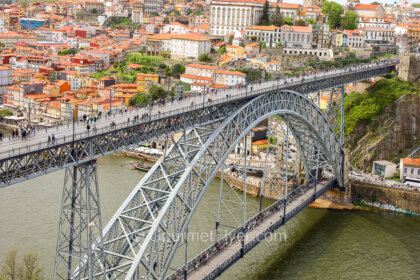Surrounded by buildings with pastel color façades and the city’s signature red tile roofs, Lisbon is a colorful destination that offers visitors numerous opportunities to explore its rich history and stunning architecture. Whether it is just a casual stroll along the streets of Old Town or a steep climb up the hill to Alfama, your journey will be filled with distinctive local flavors that are unique to Portugal. From one of the most iconic tram rides in the World to a cruise along the Tagus River, your days in Lisbon will be filled with exciting things to do and interesting places to see.
The city is also a great destination for culinary delights and cultural dining experiences. Pastries lovers will enjoy the hundreds of confeiraria that line the streets of Lisboa while foodies at heart will appreciate this melting pot of diverse international cuisines. Cod is the fish of the city, pastel de nata its iconic dessert. Steaks are often topped with a fried egg, rotisserie chickens always come with the most delicious spicy gravy.
It is a city that will keep your itinerary packed with actions and your stomach full of satisfaction. By the time you leave, you’ll wish that you had planned your stay longer. After you’ve left, you’ll return quickly – just like I did. I hope this travel guide will answer most of the questions that you have in mind and give you fresh ideas and inspirations to make your visit to Lisbon the most magical and memorable ever.
Table of Content
- Iconic Local Attractions in Lisbon
- Cultural or Historical Explorations in Lisbon
- Foodies Adventures in Lisbon
- Destinations in Belem
- Day Trips from Lisbon
Iconic Local Attractions in Lisbon
Number 28 Tram
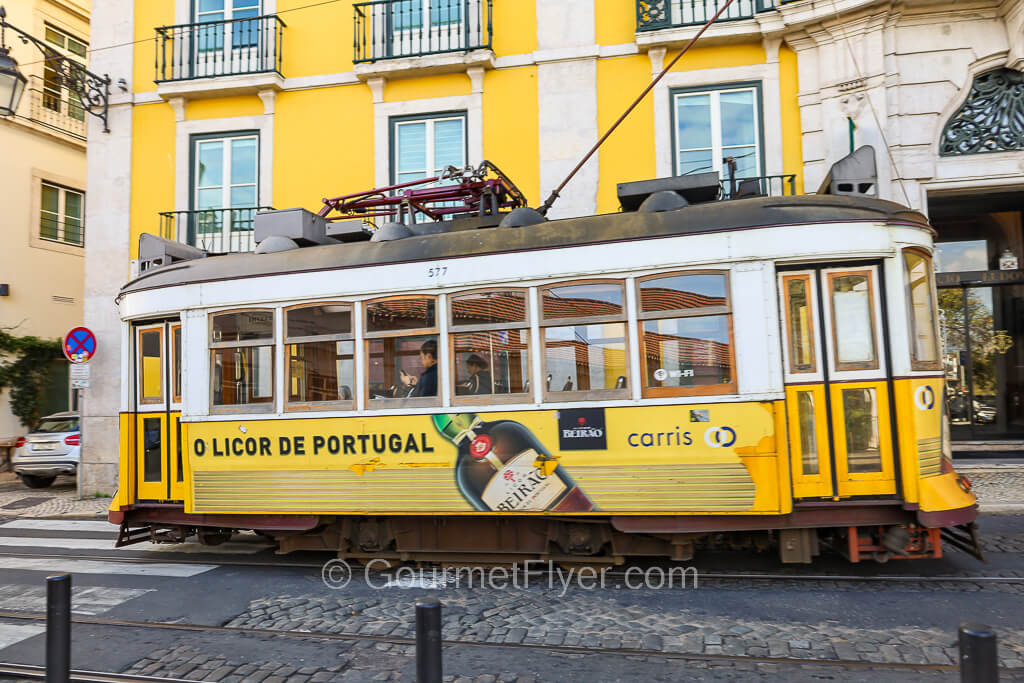
There are few, if any, things that are more iconic than the yellow trams in the capital city of Portugal. The number 28 tram takes you to the major districts of the city and provides a comprehensive sightseeing tour of Lisbon for only €3. In any other cities, these historic trams will probably be sitting in a museum. But the steep, narrow streets and the very tight turns make modern trams unsuitable for this route. And by narrow, I mean there are times that pedestrians need to pin themselves against the wall in order for the tram to pass through. This is one experience that you won’t forget.
The downside is that these trams are often very crowded and can be very unpleasant, especially in summer. They are also pickpockets’ favorite targets. One way to get around this is to board at its terminal station in Martim Moniz to ensure you get a seat (see directions above) that will make you a bit more comfortable and lesser of a target.

Another way is to take the tourist red tram which is a lot more enjoyable and much safer. It follows mostly the same route, but it is a loop, so it takes you back to the starting point, which is right at the Praça do Comércio and is very convenient if you are visiting the plaza anyway. It also comes with an audio guide in many different languages. You can purchase this on its own, or as a combination with the yellow bus tour and the Tagus River Cruise. Go here for more information.
Funicular
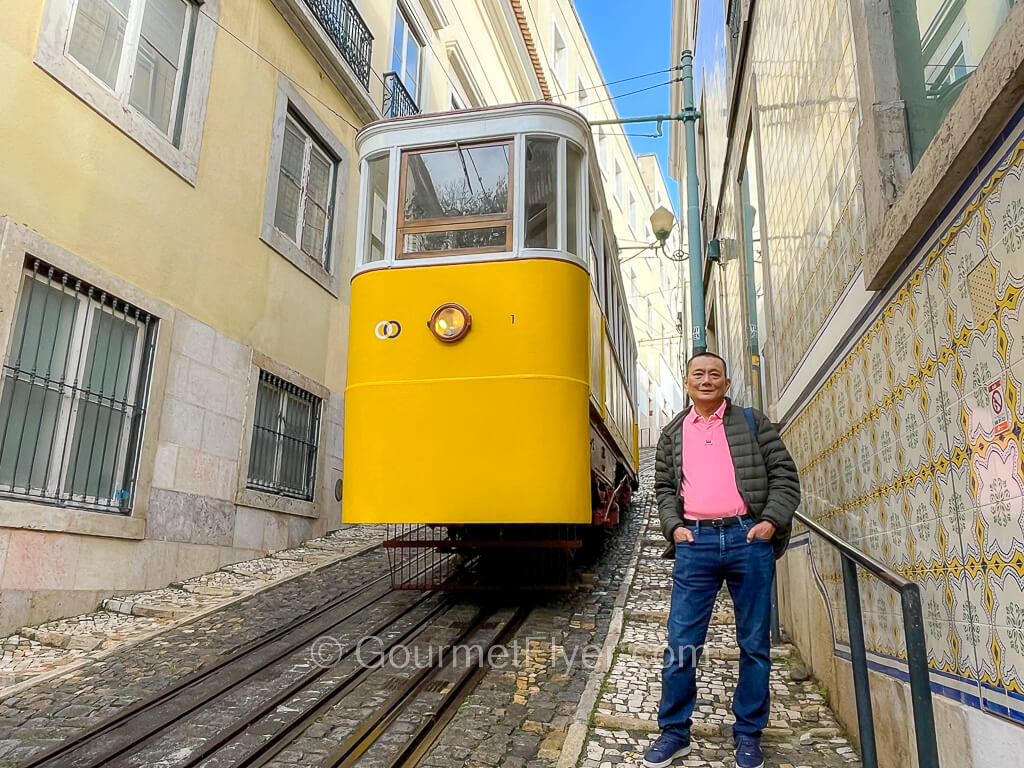
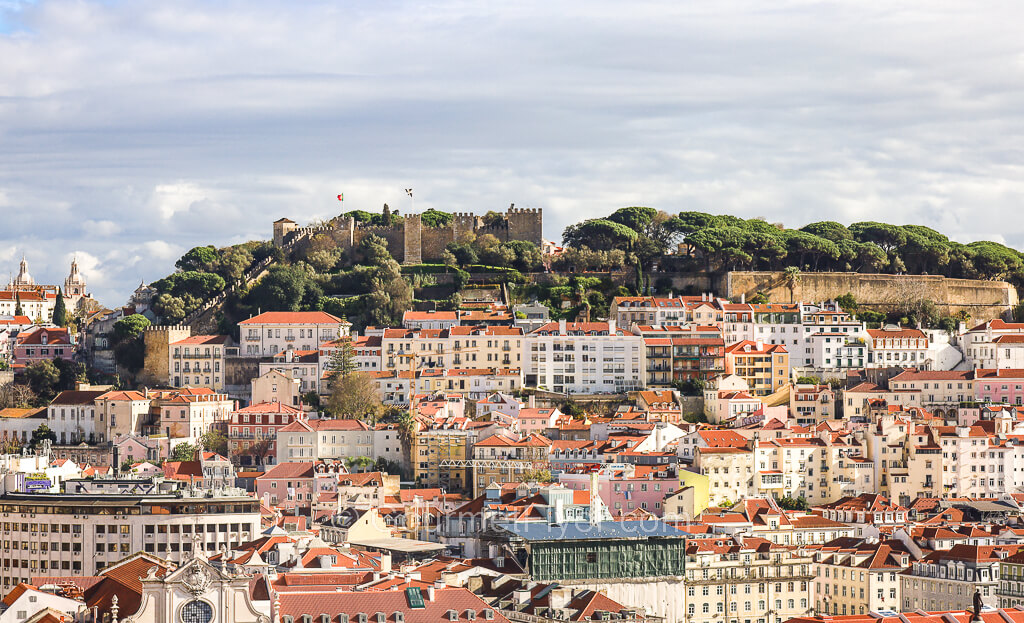
A funicular is a small tram that is almost like a slanted elevator that climbs up a very steep slope, which is characteristic of Portugal’s capital city. While their original function was probably to transport locals up the steep hills, they have now become one of the most popular things to do in Lisbon for tourists. The most popular funicular is the Ascensor Glória which is located just steps from the Restauradores station of the Metro’s Blue Line and is easily accessible from everywhere in the city Center. It takes you up to the San Pedro de Alcántara viewpoint where you can marvel at the gorgeous and panoramic view of the city.
The other popular funicular is the Bica Lift which takes you up the hill to Bairro Alto. Lastly, the Lavra Lift provides a link between Câmara Pestana and Largo da Anunciada for both locals and tourists alike.
Tagus River Cruise

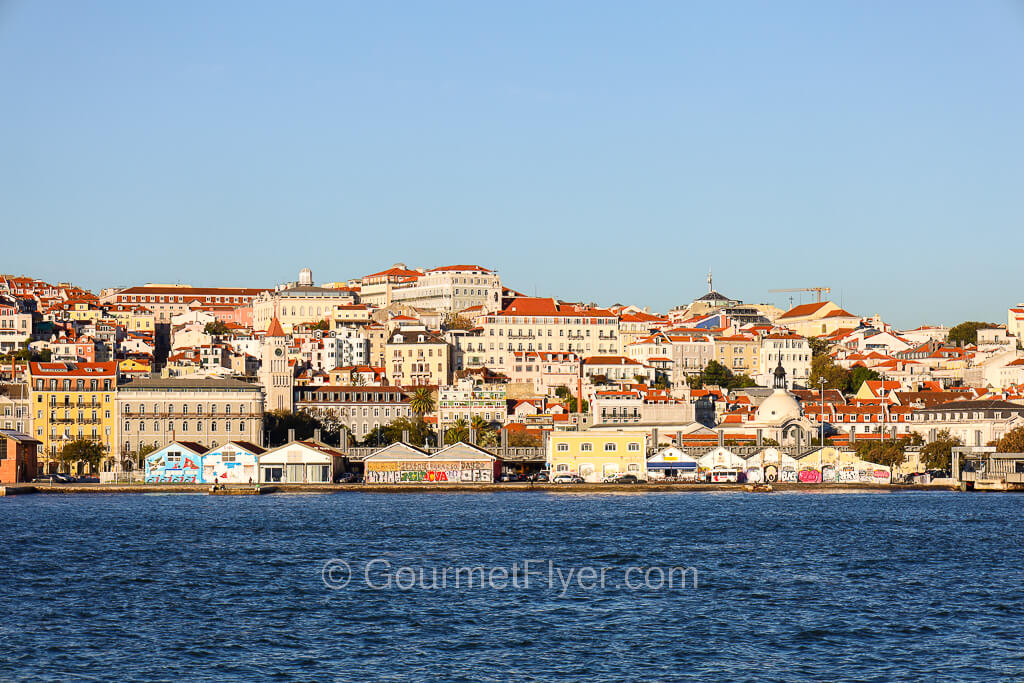
A great way to explore Lisbon is to take a river cruise and gain a completely different perspective of the city from another vantage point. The west bound journey starts from Praça do Comércio and sails along the south bank of the river, giving you a perfect view of the April 25th Bridge and the statue of Christ the King. It continues to the Monument to the Discoveries in Belem before turning around to head to the MAAT, passing by the Belem Tower along the way. The east bound cruise starts from the MAAT and sails along the north bank of the river, giving you a spectacular view of the city.
You can purchase the cruise by itself, but the best bargain is to purchase the yellow Hop-on-Hop-off bus together with the cruise + tram combo. Please go here for more information.
Alfama
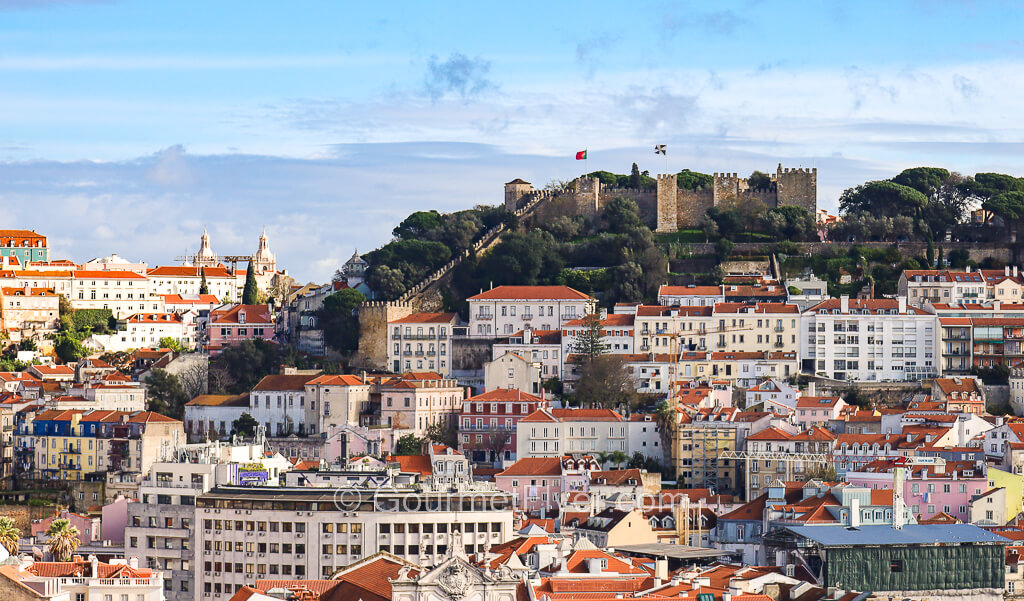
Alfama is the oldest district of Lisbon. Most of the areas were built on a solid bedrock and most structures survived the devasting earthquake of 1755. Being built high up on the hill, the district also escaped the tsunami that followed the quake. It was once the poorest district of the city but has since been transformed into a trendy touristy area with plenty of cafes, small bars, and artisan shops that line the maze of steep and narrow alleys. It is also the birthplace of Portugal’s traditional fado music, which is a soft and mournful style of music originally sung by the wives of sailors longing for their return. If you are interested, be sure to check out the Fado Museum.
Since it was built high up on a hill, exploring Alfama could be challenging as it involves very steep climbs and plenty of staircases. But you will be rewarded with the most gorgeous and panoramic views. One of the most popular viewpoints is Miradouro da Graça. Castelo de São Jorge offers visitors a perspective of the rich history of Portugal as well as stunning views from its battlements.
Alfama can be reached by taking the number 12 or 28 trams. Metro is not a good option as the stations are far away. One option that is easier on your feet is to take a taxi or Uber to the castle and then go downhill from there.
Museu do Fado
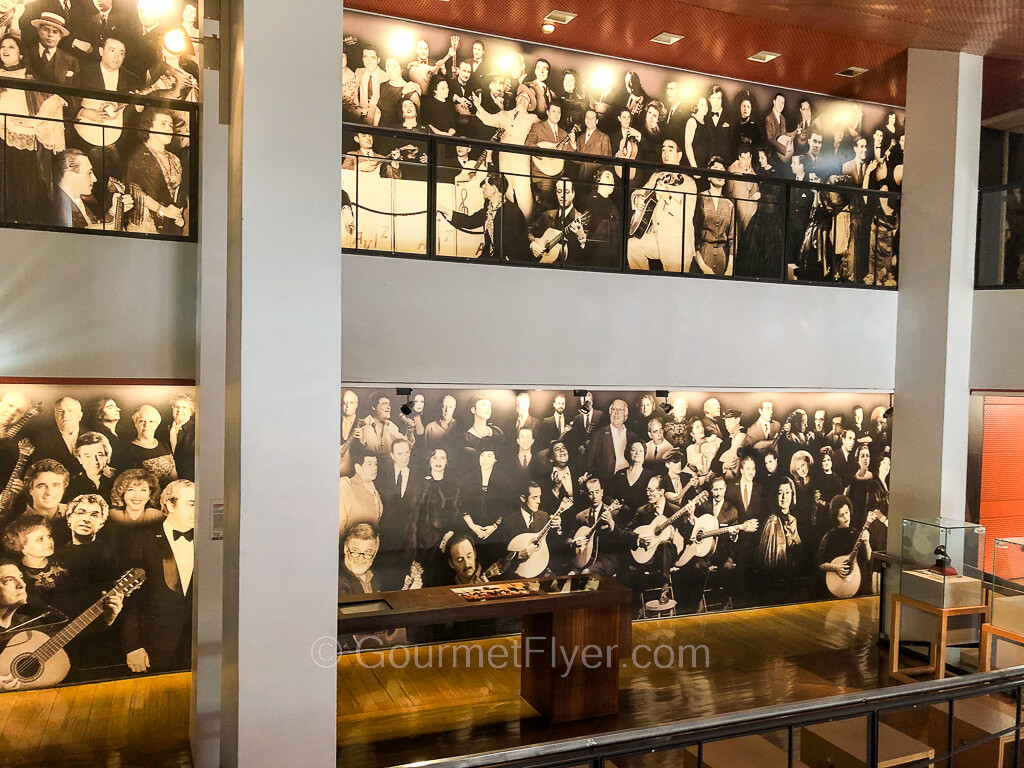
The Fado Museum documents and celebrates the decades of history of this distinctive form of mournful music that was born in Lisbon in the second half of the 19th century. It originated in Alfama, the poorest district of Lisbon at that time. Songs were about the urban lives and the challenges that they faced and were usually sung publicly in the narrow alleys of the neighborhood. It was later performed in pubs and cafés. And by the beginning of the 20th century, fado music has advanced onto theater stages.
The huge two-story black and white poster recognizes all the singers that have contributed to the popularity and success of the music. Next to some of the images on the poster, there are numbers that you can input into your headset (included with admission) that will play soundtracks from that particular artist. Throughout your visit, you will have plenty of opportunities to listen to commentary on the history and highlights of the music, as well as performances by some of the legendary singers.
Fado Houses or Restaurants

There is a subtle difference between a fado house and a fado restaurant/bar. The latter have musicians who perform while you are enjoying your drinks or meal. Food is ordered a la carte and, in most places, you can order just drinks and appetizers. The atmosphere is casual and there are usually no strict etiquettes.
In a fado house, it is more formal. A full four-course dinner is usually served. In some places, the performance does not start until dinner is over. A fado house typically features top-tier artists and complete silence is expected during a song. That is, you wait until there is a break before you order drinks or go to the bathroom.
Some of the best-known fado house include Clube de Fado, Parreirinha de Alfama, and Casa de Linhares.
Oceanarium (Oceanário de Lisboa)

The Oceanarium is one of Lisbon’s most popular tourist attractions and is a favorite for families and kids. Its centerpiece is a huge aquarium containing over 5 million liters of seawater housed in the Oceans Building. It is home to over 8,000 sea creatures from the World’s four oceans. You will start your journey from the top and slowly descend through multiple levels of the enormous tank.
The Sea Building presently houses the special exhibition “Forests Under Water” by Japanese landscape photographer and aquascape creator Takashi Amano. It features a cultured environment of the World’s tropical forests presented inside a natural aquarium in a soothing and artistic setting with original music by Rodrigo Leão.
Tickets as of this writing are €25 for adults and €15 for children 3 – 12 years old.
Cultural or Historical Explorations in Lisbon
Praça do Comércio

This famous destination and one of the most popular places to visit in Lisbon was originally known as the “Royal Yard” which was destroyed by the 1755 earthquake. During the rebuilding process, it was renamed Praça do Comércio, or Commercial Square, to recognize the new financial and commercial functions of the modern economy. Its 18th-century architecture imposes a sense of grandeur and the lemon-colored facades of the (once) administrative buildings give the plaza a stunning and majestic presence.
Its centerpiece is a bronze statue of King José I mounted on his horse. Restaurants and shops are located in the buildings to the east and west sides of the plaza. A landmark to the north is the Triumphal Arch, which offers a panoramic view of the city from its rooftop (€3 admission).
Opening to the Tagus River to the south, Praça do Comércio was at one time the major entry point into Portugal by sea. Even today, the cruise ship terminal is located not far away.
Story Centre
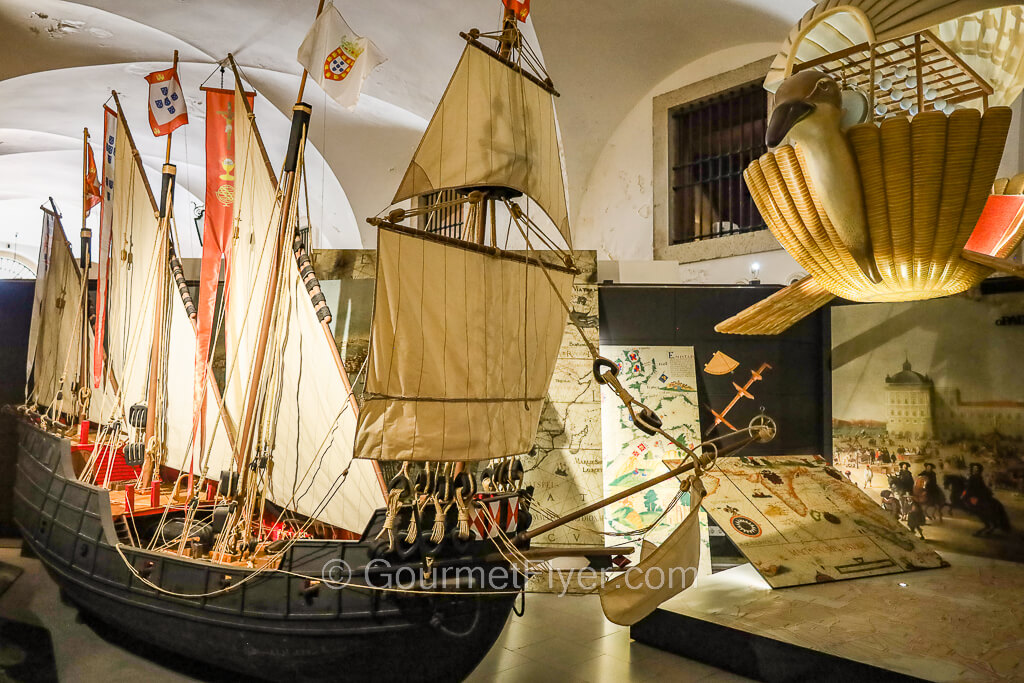
While you are at the Praça do Comércio, take a moment to visit the Story Centre which is located in the building at the eastern border of the square. It is a very different kind of museum in the sense that you are being told a story – literally. This interactive attraction tells you the history of Lisbon (and Portugal as well, in a sense) in about an hour with exhibits, pictures, models, animations, and one feature film on a big screen.
Upon entry you are given headsets which are GPS activated so you do not need to do anything other than to adjust the volume. The story is told in the sequence of a linear timeline and your headset automatically tunes in to the audio recording for each exhibit/station that you are at. One tip is that there could be multiple recordings for a particular scene so do move around to every corner of the station to hear the full story.
National Tile Museum (Museu Nacional do Azulejo)

The use of ceramic tile (azulejo) in an artistic or decorative way or for a building’s façade is quite common in Europe, especially in the Mediterranean region. However, only Portugal has a museum dedicated to this art form. The National Tile Museum was converted from the Convent of Madre Deus with much of the religious space still left intact. The building is a perfect venue to display Portugal’s iconic artistic expression. In fact, one of the highlights of your visit is the chapel itself, which houses a magnificent collection of azulejos as well as stunning oil paintings.
I know a visit to a tile museum sounds like a boring thing to do in Lisbon. But trust me on this one and don’t miss out on it. Not only will you be journeying through a timeline of five centuries of tiles, in the end you will come away with a much deeper understanding and appreciation of Portugal’s history and culture.
Lisbon Cathedral

Also known as the Sé de Lisboa, this is the oldest and also the most venerable church in the city. The architecture is mostly Romanesque but has blended some Gothic elements into its style throughout the decades of rebuilding and renovations. One of its most prominent features is a circular rose stained-glass window with twelve petals, each depicting a disciple of Jesus.
Admission as of this writing is €5 which includes access to the treasury and the cloister. The balcony on the upper level also provides a spectacular view of the city. The cathedral is located centrally and is convenient to visit. If you are taking the number 28 tram for a tour of the city, this is a great place to hop off and stretch your legs. If you are climbing up the hills to get to the Castelo de São Jorge, this is just about the halfway point and is a great stop to take a break.
Museu Arqueológico do Carmo
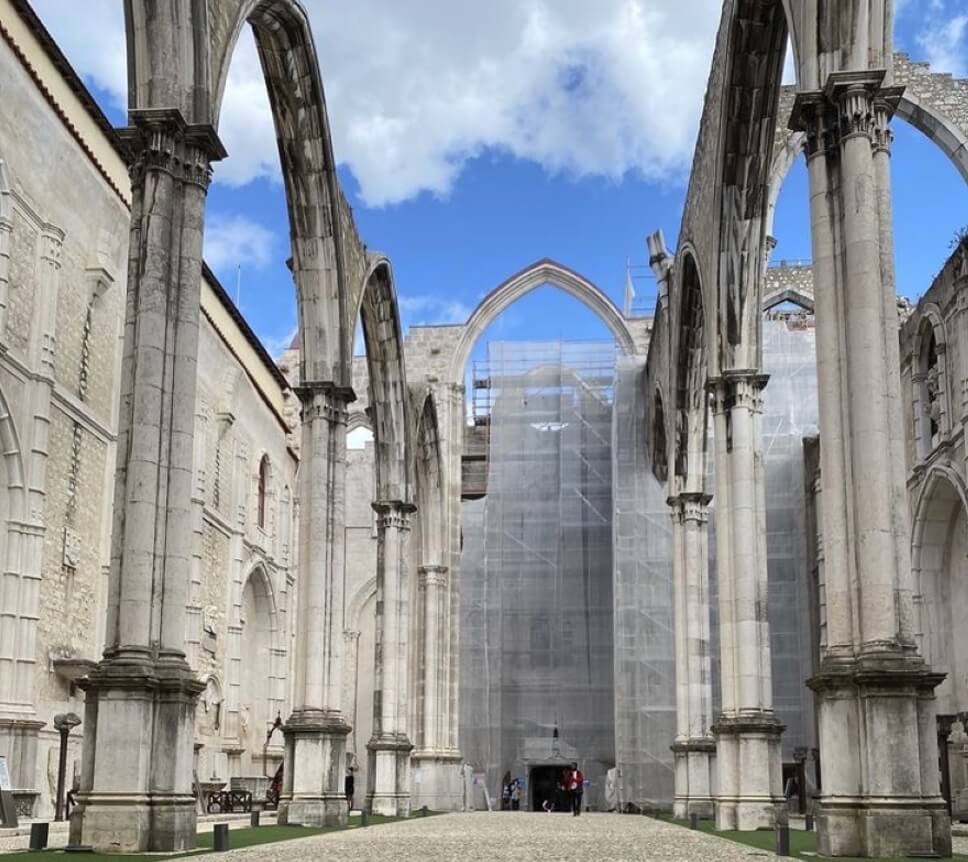
The site of this vastly popular Lisbon attraction is the preserved ruins of a majestic Gothic style Catholic convent that was destroyed during the 1755 earthquake. Most of the building was demolished but a few arches escaped the damage and remained intact to this day. Parts of the structure have been restored but some other parts, such as the collapsed roof over the nave, was never repaired. Since tourists have come to know this place as the “church with no roof”, the somber scene perpetuates the haunting memory of the devastating earthquake.
The sacristy houses the Museu Arqueológico do Carmo, a small archeological museum featuring historical artifacts from Portugal’s pre-historic days to the Middle Ages. There is also a collection of religious art, sculptures, and ceramic tiles (azulejo). As an added bonus, the rooftop terrace provides breathtaking views of the city and is a perfect spot to snap that Instagram-worthy picture.
Foodies Adventures in Lisbon
Pastel de Nata

These custard tarts originated in a monastery in Belem in 1834 and have since become the city’s iconic pastry. These tarts come in a flaky and buttery shell that is filled with a custard that is rich in egg yolk and moderately sweet. The filling is typically topped with cinnamon and is slightly burnt to bring out its aroma and flavor.
While there is no shortage of patisserie (or confeiraria in Portuguese) that sell these wonderful desserts, a few places stand out as some of the best in town. First and foremost, check out the birthplace of these custard tarts and see the section Pastéis de Belém below. Other confeiraria worth paying a special visit to are Confeiraria Nacional, Fabrica da Nata, and Manteigaria.
Confeiraria Nacional

Translated loosely as national patisserie, Confeiraria Nacional was once the official bakery of Portugal, catering exclusively to the royal families since 1829. Now it is a favorite eatery for the locals and a foodie destination for the tourists in Lisbon. Not only do they have one of the best pastel de nata in town, but they also sell a wide variety of many other pastries. Some of my favorites include mushroom pie, meat pie, and their famous bolo rei.
They are different from many other patisseries in the sense that they are also a full-service restaurant and serve breakfast, lunch, and dinner. For breakfast, I particularly like their eggs Benedict with bacon, pictured above. The takeout counter is on the ground floor. Upstairs is an elegant and comfortable dine-in area. They do not take reservations so the only way to get in is the old-fashioned way – to queue up in line.
A Brasileira do Chiado
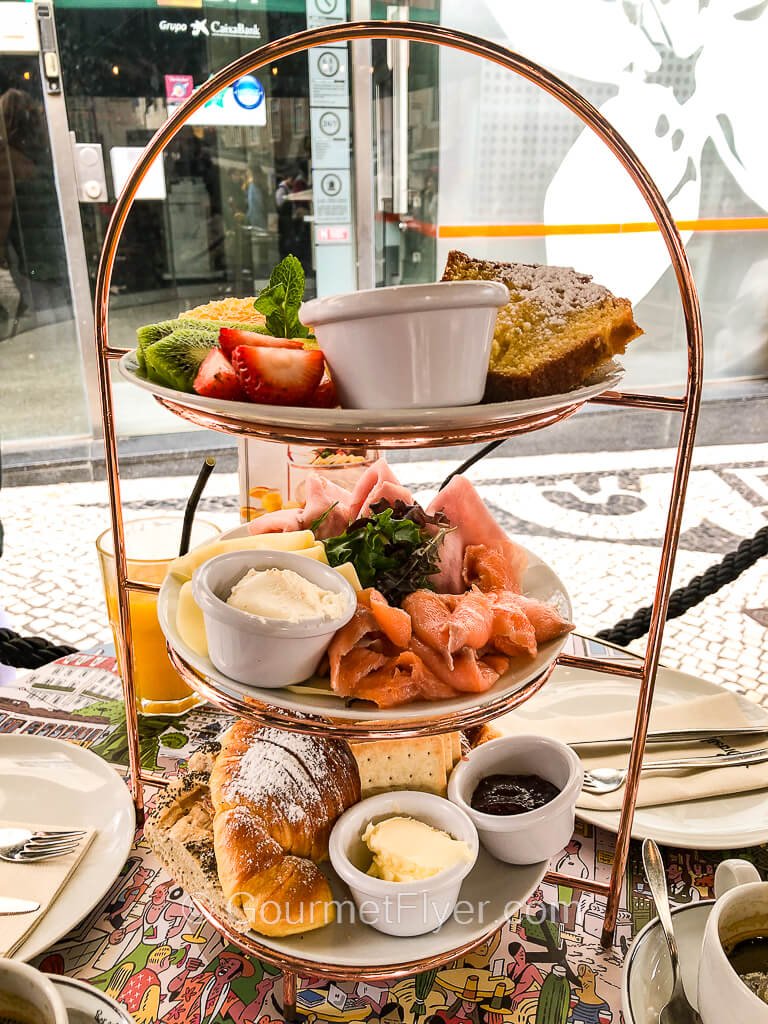
A Brasileira is not just a café or restaurant. It is a place that embraces over a century of Portuguese history and witnessed eras of political, cultural, and artistic movements. It was a meeting place for politicians and revolutionaries, as well as writers and poets. It was the place to see and be seen.
Portugal’s legendary poet Fernando Pessoa was a frequent customer and his favorite – steak A Brasileira with coffee sauce and topped with a fried egg – is still the restaurant’s signature dish today. As you approach the restaurant, you’ll see a bronze statue of the poet sitting at a table in the outdoor dining area with his left arm resting on the table.
Another of the restaurant’s signature is the pequenos-almoços, or Portuguese breakfast, which is served all day. The “breakfast” comes in a 3-tiered round serving stand which somewhat resembles an afternoon tea platter in London. Its contents include fresh fruits, slices of cheese, ham, and smoked salmon, slices of cakes, plus breads and croissants served with butter, jam, and honey.
A Brasileira do Chiado is more than just a cafe or a restaurant. It has now a major tourist destination and a frequent stop of all the food tours or walking tours of Lisbon. It is also where one can attempt to go down the memory lane and relive and appreciate the history of a legendary meeting place with over 100 years of stories to tell and to remember.
Time Out Market
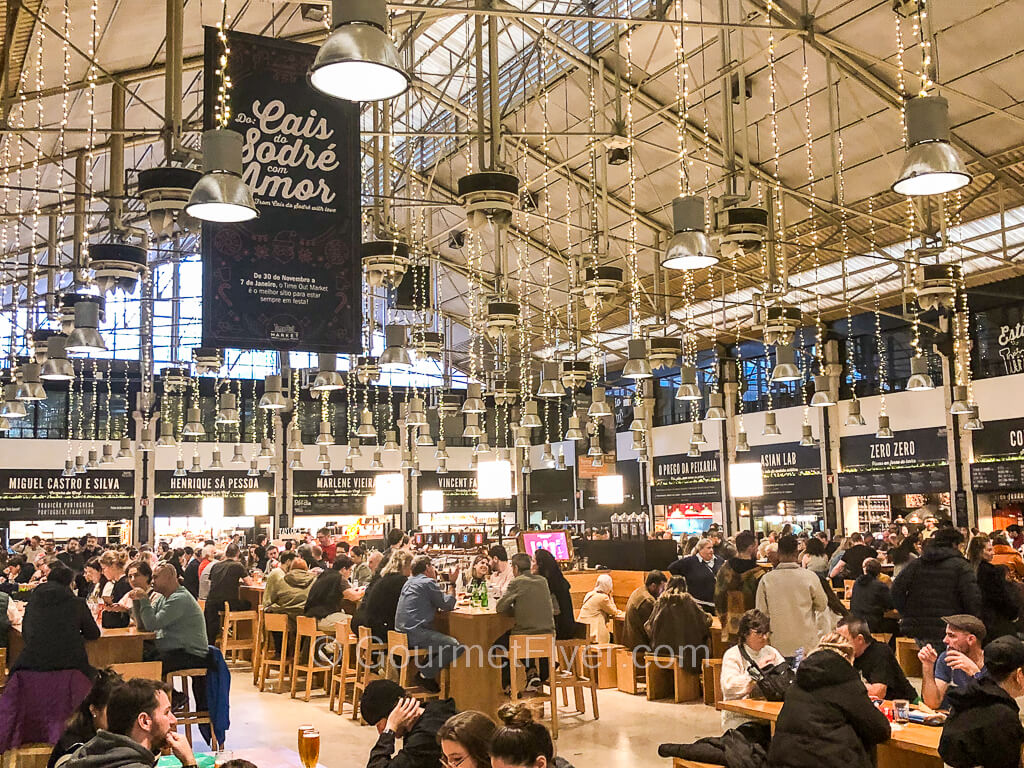
The market started out as a concept in 2014 by Time Out Magazine’s journalists and critics seeking the best culinary ideas and projects. If it’s good, it goes in the magazine. If it’s great, it goes on to the market. Hence a total of 26 restaurants, 8 bars, and a dozen shops now occupy the building, offering the best local, international, and fusion cuisines in a setting with really chill vibes and a lively beer hall atmosphere.
Whether it’s a refined gourmet burger, a juicy steak charred to perfection, the freshest local seafood, the most creative fusion cuisine, or the best pastel de nata, they have it all! This foodie attraction of Lisbon is just across the street from the Cais do Sodré station of the Metro’s Green Line and can easily be reached from anywhere in the city center.
Destinations in Belem
Belem is away from the center of Lisbon and there are several major things to do and places to see that are iconic of this capital city of Portugal. Since you will be traveling away from the city center and need to arrange transportation, I am grouping all these attractions under one section for an efficient one-day itinerary.
Since Belem is not connected to the Metro network, you need to go there by one of the following means:
- The train from Cais do Sodré Station.
- The Number E15 tram from Praça da Figueira – this is the modern CAF tram, and not the historic tram. Note that this line is very crowded and especially in summer, so beware of pickpockets.
- By bus, which includes a complicated schedule and change of buses. I do not recommend this option.
- By taxi, Uber, or rent a car.
- The Yellow Hop-on-Hop-off bus. The Belem bus takes you directly to the entrance of each attraction and save you a lot of walking. For the best option, purchase the combo which includes the Tagus River cruise and historic tram ride. Go here for more information.
Torre de Belém (Belém Tower)

Built during the height of the Portuguese Renaissance period, this tower is a masterpiece of architecture which blended the country’s late Gothic style with a touch of Medieval influence. It’s a fortification built on a small island just off the shore on the Tagus River to protect the city from naval attacks. After the Spanish occupation, it was no longer a significant defense component. Most of the four-story interior was converted to what is now known as the Governor’s Room, Kings’ Room, Audience Room, and Chapel.
Admission to the grounds is free, and just the sight of the tower on the water is majestic and magical. Entrance into the tower itself costs €8. Since visiting the tower is one of the most popular things to do in Lisbon and the interior space is small, they limit the number of people getting in and a timed ticket is required. To avoid disappointment, purchase your ticket online in advance from the government’s official site here.
Jerónimos Monastery
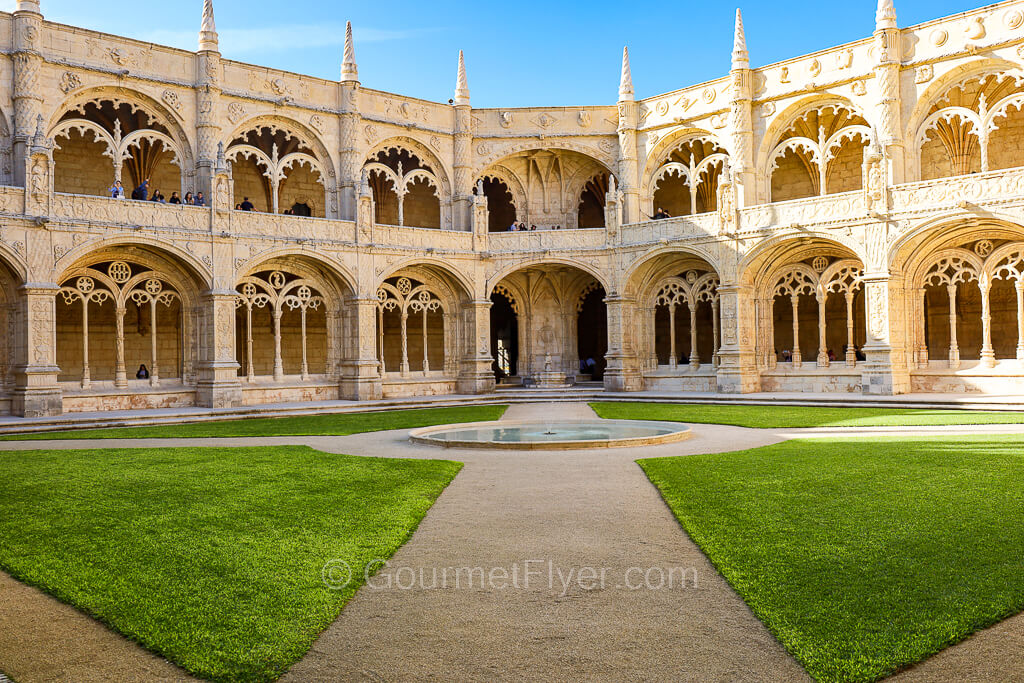
This UNESCO World Heritage site was built in the early 16th century and its construction spanned over 100 years. The monastery showcases the finest of Portuguese late Gothic Manueline style of architecture. Not only is this the most important religious building in the city, but it is also now an iconic symbol as well as one of the most visited landmarks in Lisbon. The exterior of the structure is majestic, and you can see and feel its imposing presence from a distance. In the cloisters you can observe many very delicate ornate stone carvings with remarkably meticulous details.
There are two separate lines. The line to the right is for the Santa Maria Church and entry is free. The line to the left is for ticketholders queuing to enter the cloister – note that you must already have tickets before entering this line. This site is extremely popular so to control the crowd size, entry is strictly by timed admissions only. The best thing to do is to purchase your ticket well in advance from the official website here.
Pastéis de Belém

The famous Portuguese custard tarts were born in the Jerónimos Monastery (see above) where lots of egg whites were needed to starch the garments of the monks. Hence the monks developed a recipe to make use of all the remaining egg yolks. This secret recipe was passed on to a small bakery near the monastery in 1834, which soon became this iconic restaurant, Pastéis de Belém, in 1837.
You can do this before or after your visit to the monastery, but you cannot walk away without trying these legendary custard tarts. They also serve many sandwiches and other delicious pastries as well. Don’t let the long line discourage you. The restaurant inside is huge and most people just eat and leave very quickly and do not linger long. So, although the line may look like one of those rides in Disneyland, your wait is not as bad as it looks.
Monument to the Discoveries

Padrão dos Descobrimentos (Monument to the Discoveries) was built in 1940 as a temporary component of the Portuguese World Exhibition. It was reconstructed in 1960 to resemble its current form. The monument was built to celebrate the achievements of Portugal’s explorers during the expansion of the country’s empire in the 15th and 16th centuries. The base of the monument is shaped to symbolize a ship with 32 meticulously sculptured figures of the country’s famed pioneers and voyagers following the lead of Prince Henry the Navigator.
Admission to the exhibitions cost €5 while a combo ticket which also includes a featured film and viewpoint costs €10.
Museum of Art, Architecture, and Technology (MAAT)

The centerpiece of the MAAT is called The Electricity Factory which is a remarkable restoration of a thermoelectric power plant, showcasing its original equipment and technology. It is accompanied by the newly opened History of Energy which presents a timeline leading from the most primitive form of power to today’s promises and challenges of renewable energy and its sustainability.
Contemporary arts of various forms are on display throughout the main building (MAAT Central) and its adjoining spaceship-like gallery. There are usually several special exhibitions at any given time. As of this writing, the featured exhibition is “Plug-in” by Joana Vasconcelos, which will be on display until summer of 2024.
Note that the pier next to the MAAT is also the docking point of the Tagus River cruise, so you can plan to have this as your last stop in Belem and take the cruise back to central Lisbon. Go here for more information.
Day Trips from Lisbon
Sintra
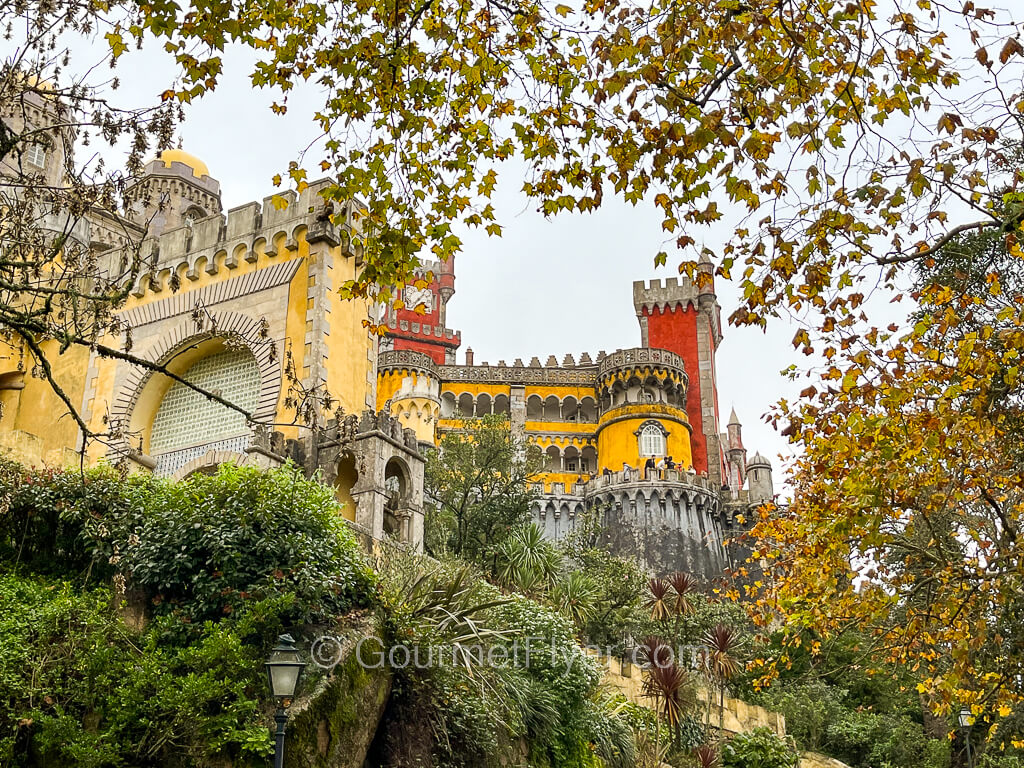
Pena Palace used to be a summer residence for the royal family and is now a major attraction in Sintra which attracts hundreds of thousands of visitors a year. It has a uniquely blended style of architecture, and its colorful façade is a signature of early Portuguese design. Another major point of interest is the Castle of the Moors (Castelo dos Mouros) which was at one time an important strategic point of defense. Since it is located high up on the hill, you’ll also enjoy a panoramic view of the city. The quaint historic center is also a great place to explore the history and culture of Sintra and to grab lunch from one of the cozy cafés.
It is very quick and easy to get to Sintra from Lisbon by train. Depending on where you are staying, you can catch the train from either Rossio or Oriente station. Once you are there, one of the best ways to get around town is to take the number 434 tourist bus which loops around the city, stopping at major attractions along the way. As of this writing, an all-day unlimited pass costs €15. Other alternatives include taxi, uber, or tuk-tuk.
If you do not want to deal with the complicated schedules of public transportation, another alternative is a private tour in the comfort of your own air-conditioned vehicle with a professional guide, including door-to-door pickup and drop off.
Fátima
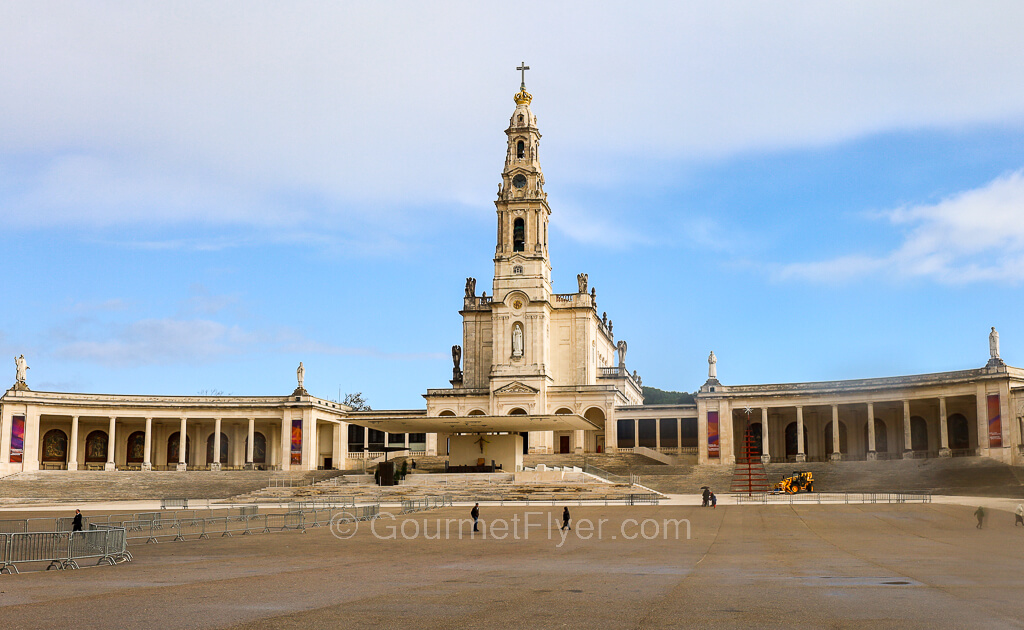
The Sanctuary of Fátima is one of the World’s most visited Marian Shrines, drawing several million of Catholic pilgrims and tourists a year to the site. The basilica was built to commemorate the apparitions of the Virgin Mary to three shepherd children between May and October of 1917. The Chapel of Apparition was built on the actual location where the apparitions occurred. Several rosary liturgies are held there daily. Daily mass is also celebrated at the basilica. You can go to the Sanctuary’s official website for schedules.
One of the most economical ways to get to this famous attraction from Lisbon is to take the Metro Blue Line to Jardim Zoológico which is connected to the Sete Rios bus station and take the Rede Express bus to Fátima. If you do not want to navigate through the complicated public transportation systems and also want to combine your visit to the Sanctuary with other destinations, a guided tour might be a good alternative.
Fátima, Nazaré, and Óbidos
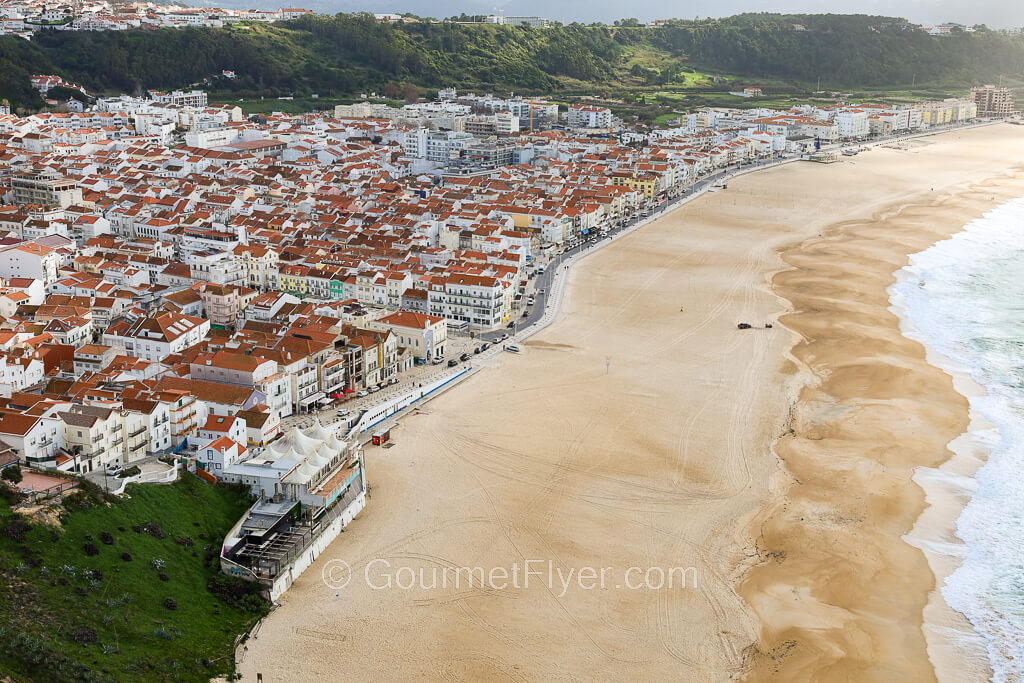
One of the best things to do in Lisbon is to combine several nearby destinations in a day trip away from the city. This is quite difficult to do with public transportations and involve complicated logistics and is also very time consuming. One good alternative is a small group guided tour.
Your first stop is the Sanctuary of Fátima (see above) where you have 90 minutes of free time to explore the Marian Shrine. The next stop is Portugal’s iconic Batalha Monastery built by King John I. This massive monastery showcases Portugal’s masterpiece of Manueline Gothic architecture and it took over a century to build.
Enjoy a seafood lunch at the quiet and quaint fisherman’s village of Nazaré and soak in the stunning views from the cliff. On a lucky day, you might even be able to see the massive giant waves that attract professional surfers from around the World.
Last but not the least, stroll along the cobblestone streets of the charming and romantic Medieval village of Óbidos. Venture through the maze of narrow alleys and appreciate how well traditions and architecture are preserved in this lovely town.
For more information, please see my complete review of this tour.
Porto
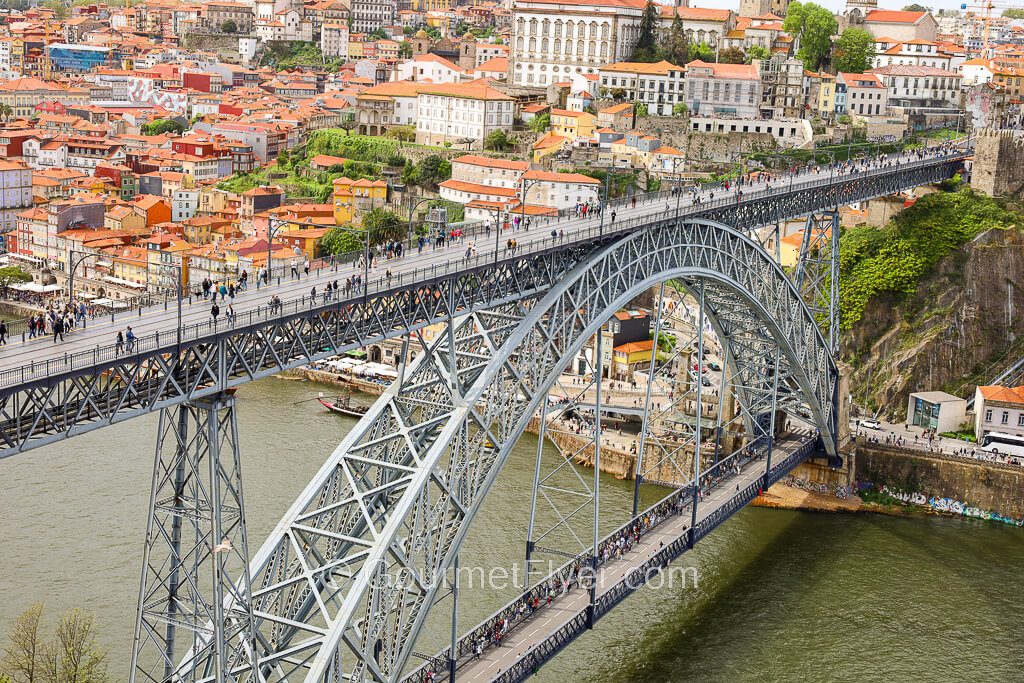
While I typically recommend at least a two to three-night stay in Porto, for those who have limited vacation time, a day trip is doable. You just have to start early in the morning. Air Portugal’s first flight out is at 6:45am most days and the flight takes only about 50 minutes. There are trains leaving both the Santa Apolonia and Oriente stations around 6:30 in the morning but the travel time is over three hours.
You’ll spend a whole day admiring iconic architecture, sampling delicious local foods, indulging in port wine tasting, strolling along two vibrant waterfronts, and enjoying a scenic cruise on the Douro River. Please see my post below for an exciting, compact, and fun-filled one-day itinerary:
